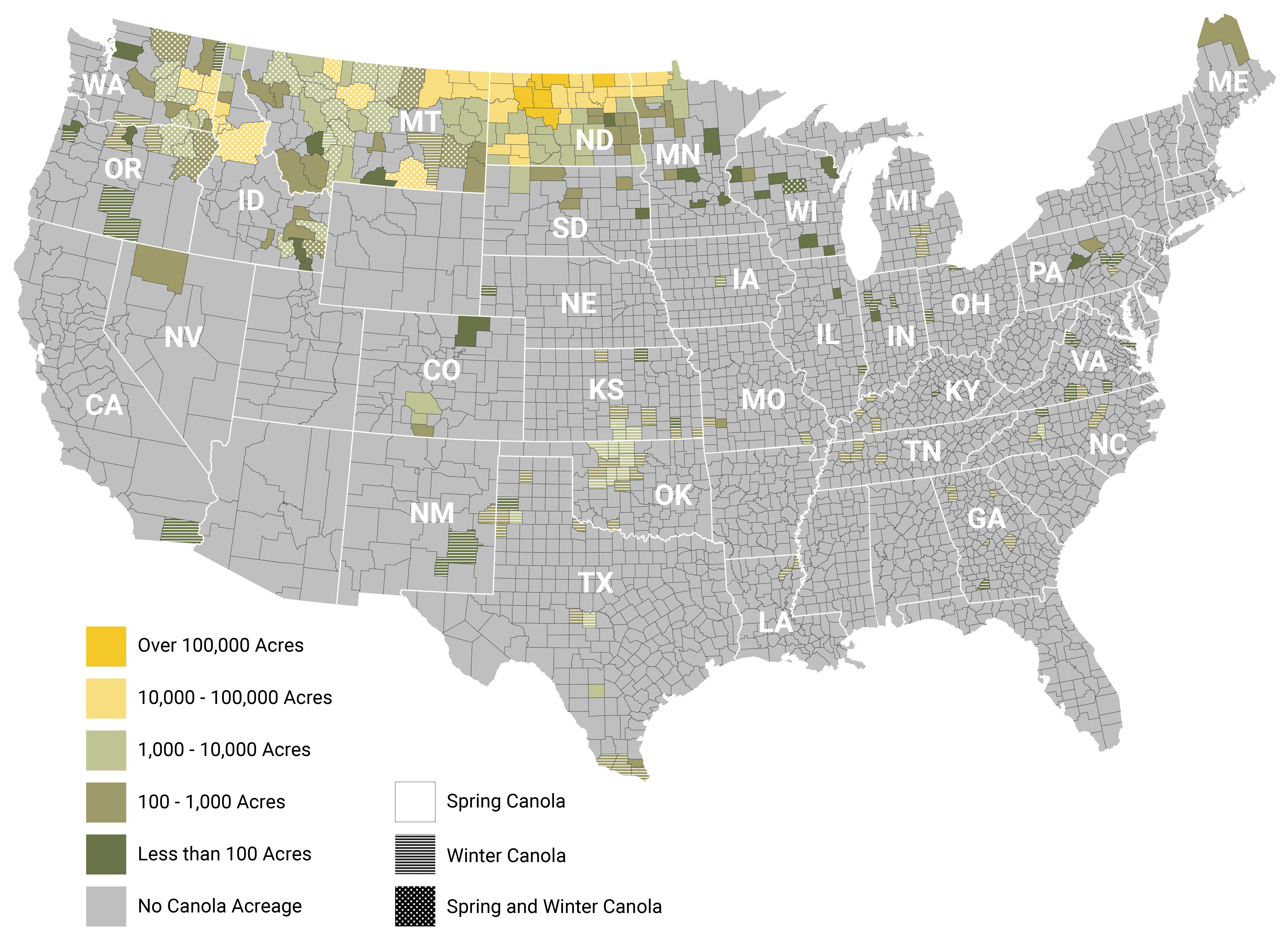U.S. Canola Production
More than 2.7 million acres of canola are currently grown in the United States, primarily in the Northern Plains, Pacific Northwest and Southern Great Plains. In 2024, a record of more than 4.8 billion pounds of canola were produced on 2.7 million acres in 30 states, led by North Dakota (more than 2.1 million acres) and followed by Washington (157,000), Montana (203,000), Idaho (95,000) and Minnesota (108,000). North Dakota produced a record 3.9 billion+ pounds.
U.S. Canola-Growing Regions by County

Spring and Winter Canola
There are two types of canola: spring and winter, named as such for when they are planted. Spring canola is planted in early spring (March) and harvested around September. This type accounts for the majority of U.S. canola production. Winter canola planted in the fall (September) over winters and is harvested in June. Typically, winter canola will yield 20 to 30 percent more than spring canola. It is grown in warmer areas like the Southern Great Plains. In the Pacific Northwest, both spring and winter types of canola are grown. In the Northern Plains, spring canola is typically grown while in the Southern Plains, the winter type dominates.